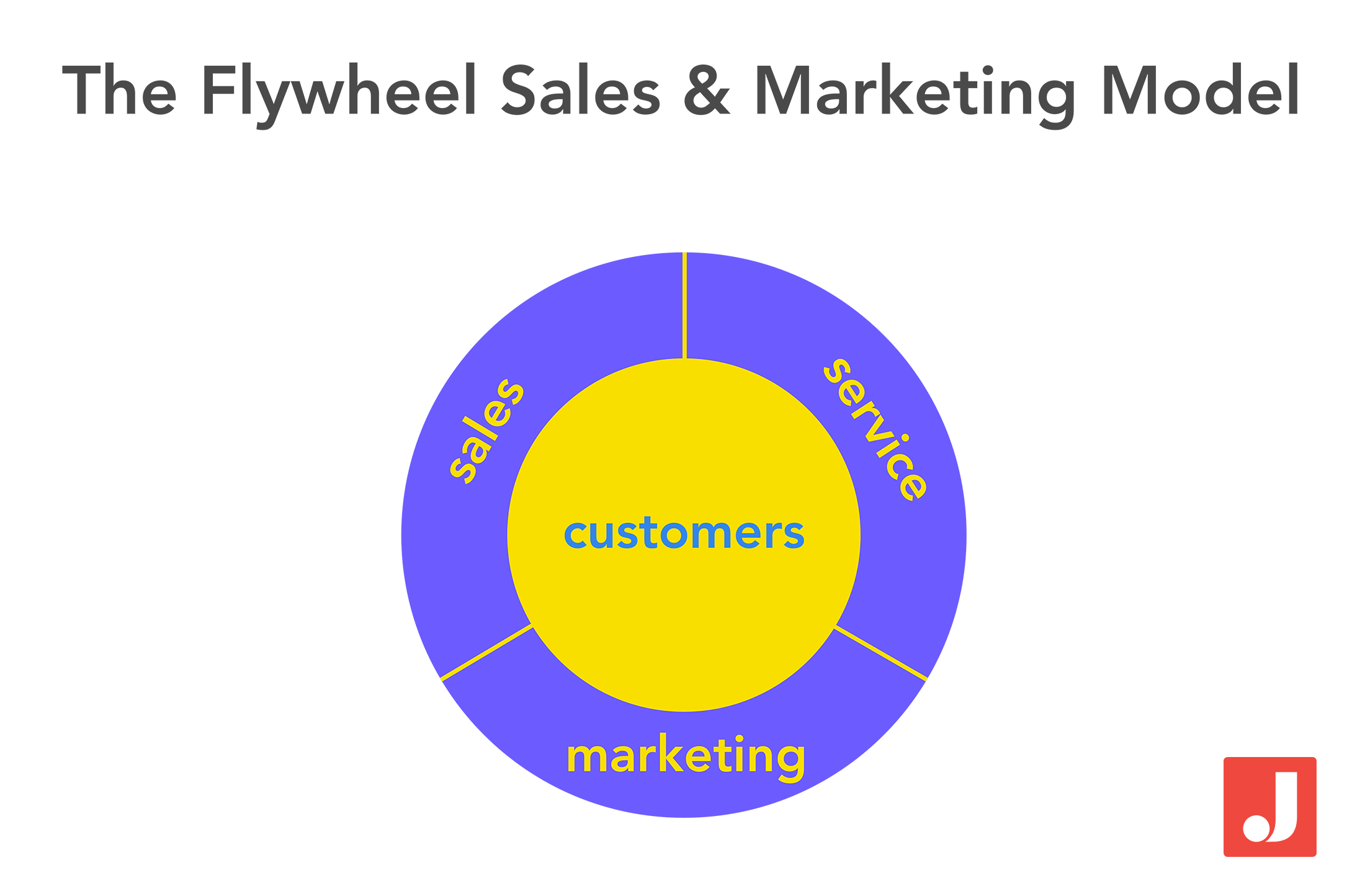The flywheel sales and marketing model was introduced as an antithesis to the traditional sales and marketing funnel model. The two have major league differences. The main difference between the two includes how the customers are treated. The “old-school” funnel model places the customer as an afterthought of any marketing strategy and really only focuses on new customer acquisition.
However, the flywheel model places the customer at the heart of the sales and marketing strategy, helping companies make sales and gain referrals. Overall, the flywheel model is an upgrade to the funnel model that many people are accustomed to.
The Flywheel Model
The main component of the flywheel model are your existing customers. The people who are currently paying your bills. They are the foundation of this model.
Sales, Service and Marketing are wrapped around your customers. That’s right. Your customers ARE a new department of your business – they are your new teammates!
This is an important distinction. You are now going to treat your customers like the people you go to happy hour with. Not how you treat the annoying person calling in with a technical problem.

Why are customers a new department of the company?
Because existing customers keep revenue coming in and add to your revenue stream by bringing new customers. The model is based on word-of-mouth marketing. If your customers are happy, they will tell others to come on by.
Marketing, Service and Sales are all communicating with the customer and to each other. That way the customer is being taken care of by the entire company.
It’s quite a mind-smack if you’re trained and have been taught to frame everything in terms of funnels. Not to mention if you use analytics tools that are all based on the funnel model!
How to use Flywheel Model
Numerous steps must be taken to leverage the flywheel model. Below are the steps:
Step One: One must re-educate themselves about the stages of the flywheel model. Besides knowing the stages, one must also advocate their products to attract and onboard new customers.
Step Two: This step involves setting the right metrics, which align with company goals and objectives.
Step Three: Identify all friction areas within the model to enhance communication between the staff members and customers.
Step Four: Conduct A/B tests, Conversion Rate Optimization (CRO) tests and experiments. These tests should be carried out frequently to ensure all the changes are captured and addressed.
Step Five: Finally, one should track and evaluate the results obtained. You should continually assess the strategies introduced and make necessary amendments to make them effective.
Remember! Models Aren’t Universal Laws!
We’re not advocating that the flywheel model is better than the traditional funnel model. It’s simply another way to model your sales and marketing efforts.
Why have a sales and marketing model?
If you are diligent about tracking and measuring your sales and marketing results you can see if your data fits the model you are using.
The ultimate goal of any sales and marketing department should be to create a model of your daily activities so you can create a repeatable and predictable process.
If you know that doing X, Y and Z creates a certain revenue, customer count and retention, then you’re in great business shape (better than most!).
We’d like to thank Klientboost for bringing this model to your attention!
Feedback loop by Davo Sime from the Noun Project

